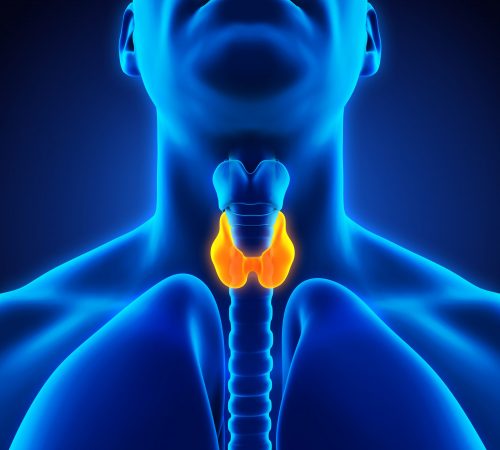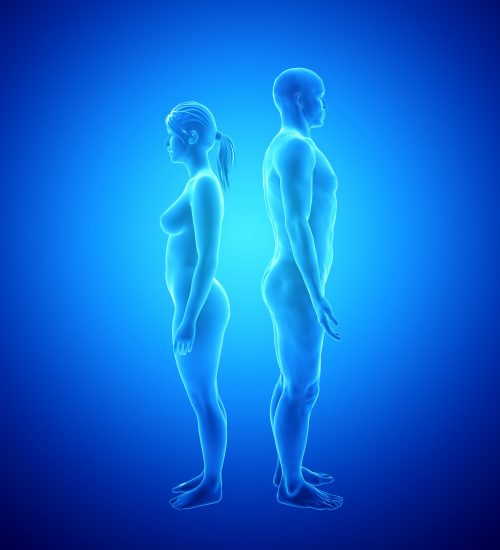Testosterone – Which Blood Test Do I Need & Why?

The Men’s Health Clinic has a thorough complement of blood packages designed to not only help us diagnose Testosterone Deficiency (TD), but also to safely and effectively monitor your body’s response whilst on Testosterone Replacement Therapy (TRT). Men are becoming more and more aware that they need to take responsibility for their own health, which is a great thing in my opinion. Why would you not want to have an element of control over the decisions you make about your health?
It can be a bit of a minefield navigating your way through the internet, cognitive dissonance abounds and the allure of the path of least resistance can serve as more of a hindrance than a blessing. It’s important to know where to look and who to trust for accurate information and unbiased expert advice. Information is power, if used correctly it can help improve understanding, which can have a positive impact on your health and sense of well-being.
One of our aims at The Men’s Health Clinic is to increase understanding and awareness surrounding TD and TRT. In 2017 we launched the independent closed Facebook group ‘TRT in the UK‘ for men all over the UK and Europe to share their knowledge and experiences surrounding the subject of Testosterone Deficiency and Testosterone Replacement Therapy.
As a UK doctor, I am very aware of the issues regarding the lack of knowledge, understanding and care provided by the NHS in this field. Hopefully, through education and experience, we can help redress these shortcomings and affect a positive change to not only you the individual, but to all men. We face so many barriers in having TD and TRT accepted as a legitimate medical condition, we need to set the standard for others to follow.
A while ago I wrote the unbiased and independent blog ‘How to Get TRT in the UK’ and, more recently, ‘How to Get TRT in the UK – Update’. Their purpose is to, hopefully, provide you with all the information necessary for making an informed choice about the route you would like to take. The following blood packages give you access to the information you need before approaching your doctor and working with them to access safe and effective care.
TRT Complete
This is the test that will help establish a formal diagnosis. Ideally it should be performed fasted and between the hours of 08:00-11:00 when your natural testosterone levels are at their highest.
According to the BSSM Guidelines men with a Total Testosterone of less than 12nmol/l and/or Free Testosterone of less than 0.225nmol/l, should be considered for a trial of TRT. Men with a Total Testosterone of less than 8nmol/l and Free Testosterone of less than 0.18nmo/l, would benefit from a trial of TRT. The guidelines recommend two samples to confirm the diagnosis, so I would initially approach your doctor with your ‘TRT Complete’ results as they will likely want to validate them with an NHS pathology lab test.
Sex-hormone Binding Globulin (SHBG) is “the most important hormone in the world” (said in Jeremy Clarkson esq voice). Our understanding of its importance in hormonal health is evolving. To the layperson, it binds to testosterone preventing it from being bioavailable, ergo let’s try to reduce it. The reality is that it helps the transfer of testosterone into the cell and helps modulate expression of testosterone within the cell. It’s important, as are ALL hormones, they all have an important function within the body. Elevated SHBG can be due to hyperthyroidism or liver dysfunction, so it may be possible to correct this, free up some Free Testosterone and improve your symptoms. Low SHBG is often associated with chronic diseases and increased insulin resistance. Interestingly, I’ve observed improvements in SHBG with stable, optimised testosterone levels.
The ‘TRT Complete’ also includes pituitary hormones such as Lutenising Hormone (LH), Follicle Stimulating Hormone (FSH) and Prolactin. The LH and FSH will allow your doctor to differentiate between a primary and secondary hypogonadism, which will help to identify a cause. It’s important to recognise that actual causation is almost impossible to prove without pre and post blood markers. A grossly elevated Prolactin with a low LH and FSH can indicate a potential tumour. It should be noted that Prolactin is a very reactive hormone and numbers should always be contextualised with symptoms. It’s often hard as a patient to be objective, so in the words of Lance Corporal Jones “Don’t Panic”, simply discuss abnormal results with your doctor. When you see an abnormal result, it’s natural to think worse case scenario, even with the odds massively in your favour.
This test also includes oestrogen. Not just for females, oestrogen is an important androgen, it’s pivotal to cardiovascular health and bone strength. Not only that, low oestrogen means low libido and weaker erections. Elevated oestrogen is often related to increased aromatisation of testosterone to oestradiol. Liver dysfunction and obesity can lead to over-expression of the aromatase enzyme. A high oestrogen to testosterone ratio can lead to symptoms not too dissimilar to that of low oestrogen, but also include the ever-concerning gynaecomastia, nipple tenderness and water retention. A high oestradiol to testosterone ratio increases your risk of prostate cancer. You’ll read on the American forums that measuring Oestradiol with the standard immunoassay is a complete waste of time. This is absolute garbage! Whilst the standard test may not be able to differentiate between E2, CRP and Progesterone, we have been using it at The Men’s Health Clinic with great success for close to three years now. A good clinician should treat the patient, then use the numbers to confirm the suspected diagnosis. Yanks, God love them.
Other hormones measured in the ‘TRT Complete’ are your thyroid hormones. It’s important to recognise that hypothyroidism can cause a secondary hypogonadism, it can elevate SHBG reducing your bioavailable Free Testosterone. It may be possible to reverse these issues and prevent you from needing lifelong TRT. This is why an effective diagnostic work-up is crucial.
It’s also important to have a Full Blood Count measured prior to starting TRT. Free Testosterone can stimulate erythropoiesis through its action on the kidneys which, in turn, can raise haematocrit (HCT). Most men feel a subjective improvement on TRT with an HCT of 0.5. If your HCT is higher than this, it’s worth talking to your doctor. Ensure that you stay well hydrated and monitor your blood pressure as you don’t want your ticker to be working too hard!
Interestingly, testosterone does not increase the risk of prostate cancer. As already mentioned, the incidence of prostate cancer increases with a decrease in testosterone to a relative increase in oestrogen. The thing is, testosterone does not know that you have prostate cancer as it can’t differentiate between normal cells and cancer cells. Prostate cancer is androgen receptive meaning that it’s hungry for testosterone, hence the need to monitor your Prostate Specific Antigen whilst on treatment.
The other useful tests included in the ‘TRT Complete’ are:
- Liver Function – Liver dysfunction increases aromatisation of testosterone to oestradiol and raises SHBG.
- Urea & Electrolytes – Kidney dysfunction can increase drug clearance times.
- Lipids & Cholesterol – High Free T can reduce HDL-Cholesterol.
- HbA1C- Assesses your risk of diabetes.
- Ferritin – Is an inflammatory marker and may reflect low iron.
TRT Review
This test is appropriate for men already on TRT who are due a formal review. It covers all of the necessary blood tests to safely monitor their progress whilst on TRT. It includes all of the hormones in the ‘TRT Complete’, plus a Full Blood Count and Prostate Specific Antigen.
I tend to review my patients without their blood results in front of me. I want to know how they are feeling, not in a huggy-feely type of way, but I want them to be objective. Everyone is unique, not special, their optimised levels are likely to be different to my optimal levels. However, I will give you a rough guide to Testosterone Optimisation Therapy according to my clinical experience:
- Total Testosterone 19 – 35 nmol/l
- Free Testosterone 0.45 – 1.0 nmol/l
- Oestradiol 90 – 150 pmol/l
Bearing those numbers in mind, I can tell you that most men feel better in the mid to low range of the above figures – calmer, improved mental focus, higher libido and stronger erections. Paradoxically, more isn’t always better when it comes to TRT. I wrote a blog on the subject ‘Chasing Numbers’. In order to feel fit and healthy, you need to address the cornerstones of health – lifestyle, nutrition and exercise. TRT will allow you to take that step forwards, but it won’t take it for you.
Any other TRT related tests should be recommended by your prescribing clinician, dependent on what they are wanting to measure. There’s no need to always be checking every parameter, i.e. when a protocol change is simply designed to lower E2.
I hope from reading this blog it’s clear why we should adopt a holistic approach to health, considering both the symptoms and the signs, and how important it is to contextualise these things. As a patient, it’s very difficult to be objective, it’s very easy to be reactionary. You should discuss all abnormal results with your doctor. Don’t shoulder all the responsibility, work with an experienced clinician who has your best interests at heart. That way, you can maintain autonomy at the same time as relinquishing some control so that you can concentrate on living.
Dr Robert Stevens MBChB MRCGP Dip.FIPT


